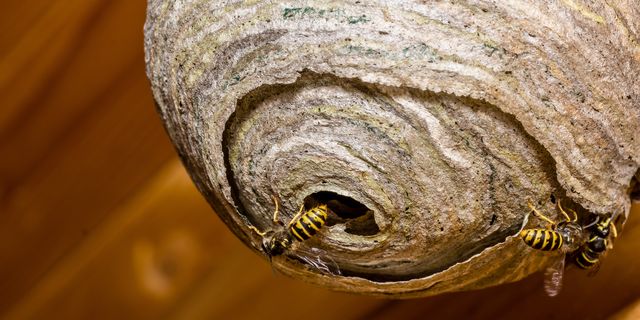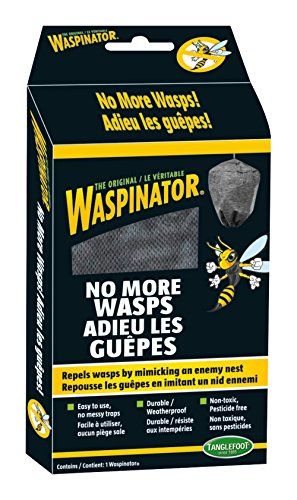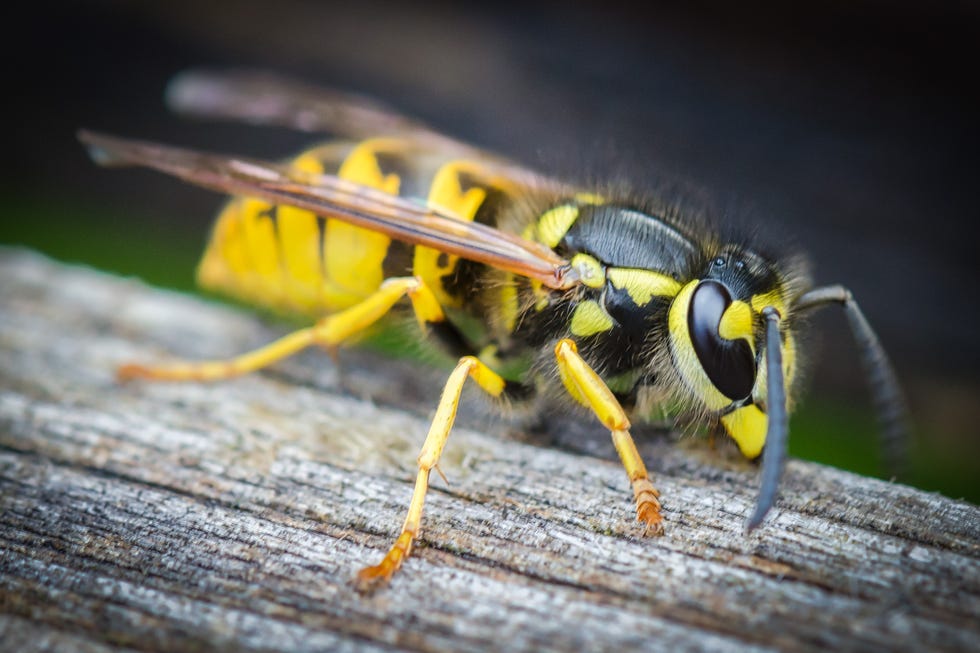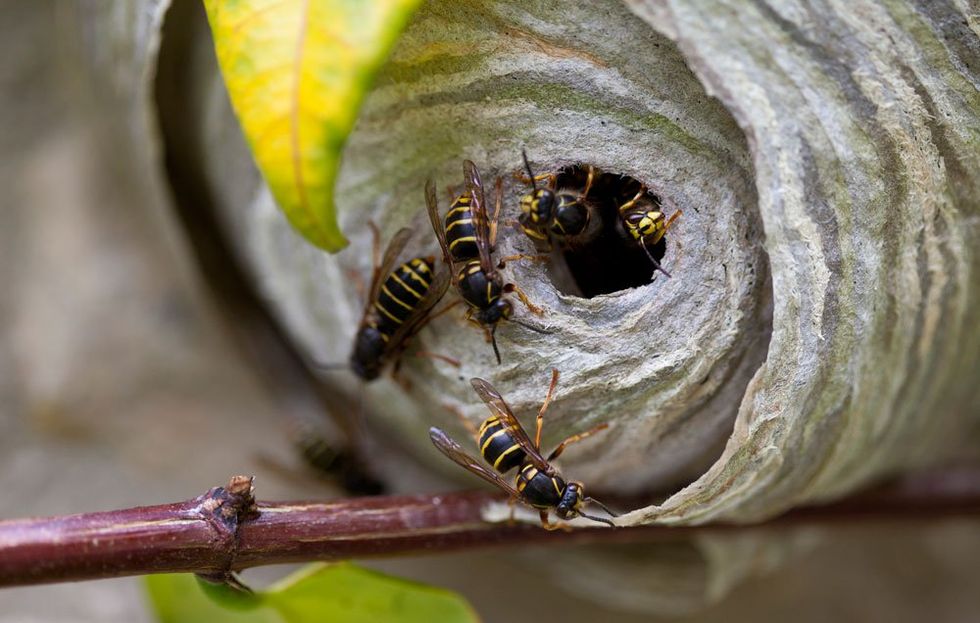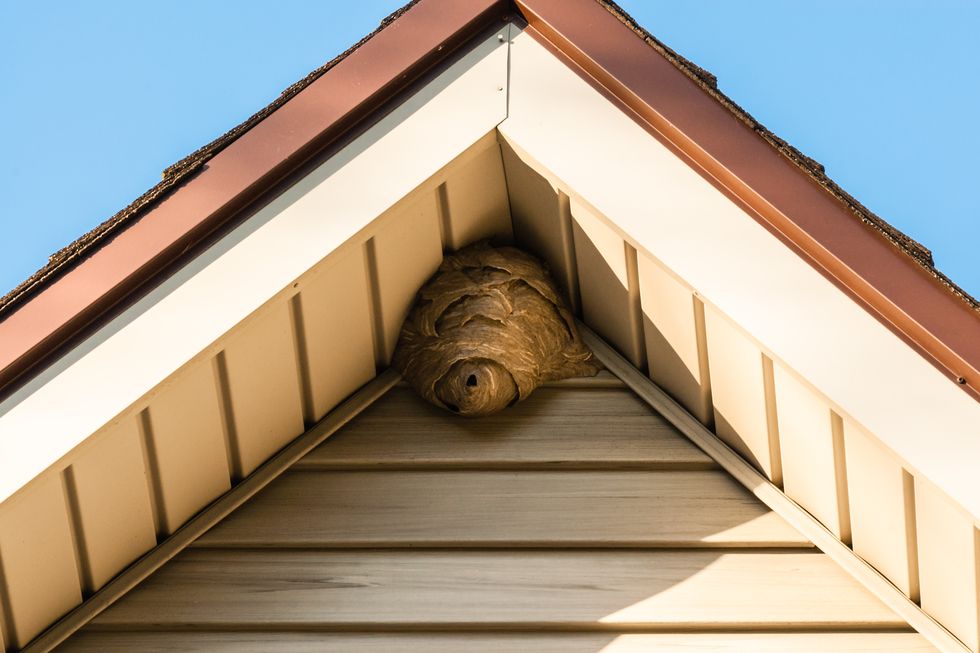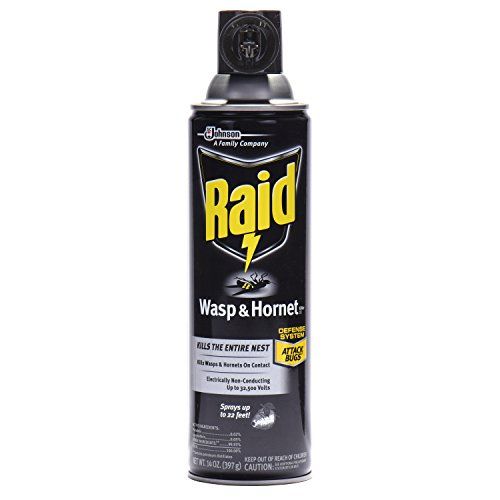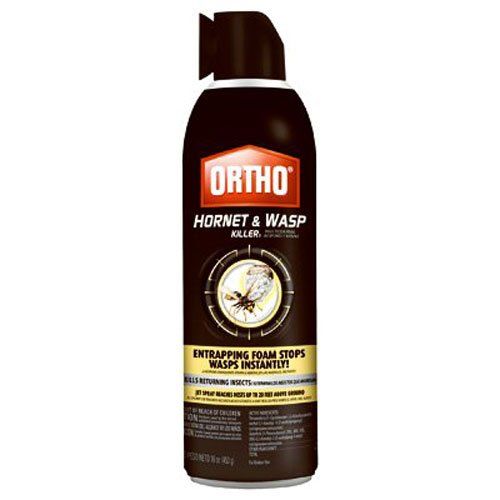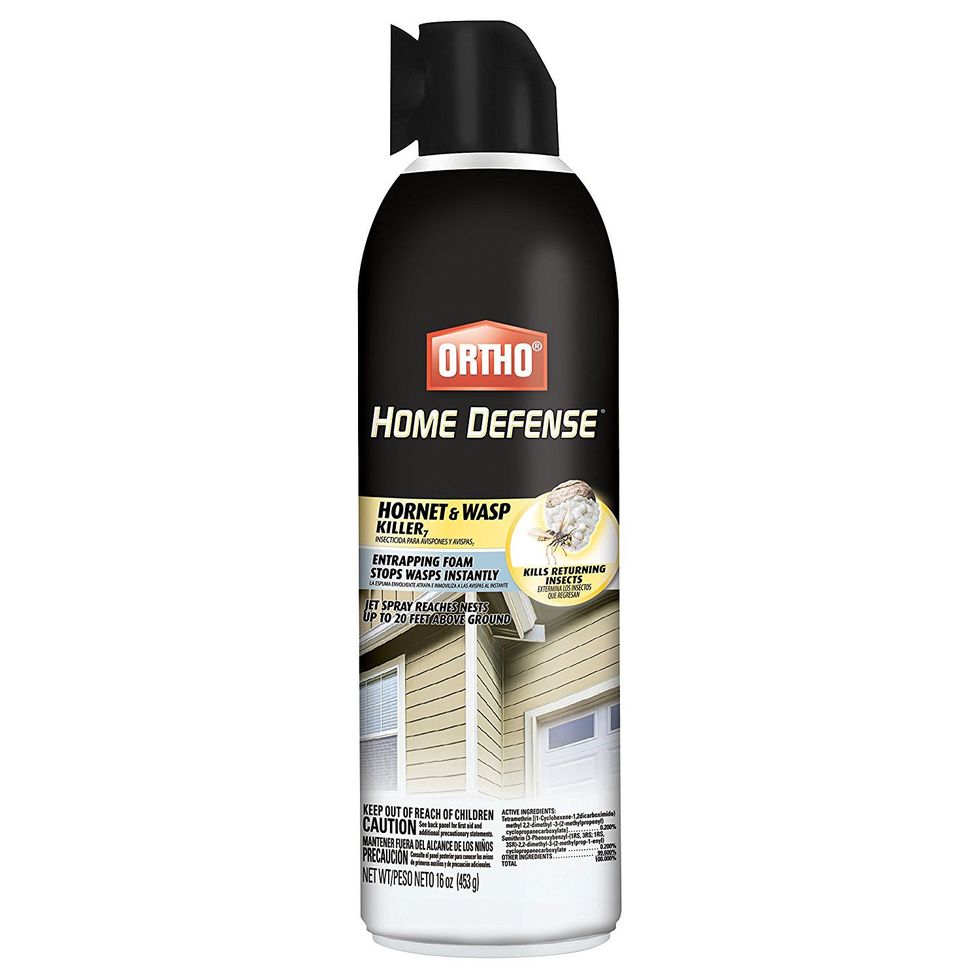Wasps, hornets, and yellow jackets can put a serious damper on your outdoor fun. And since populations peak in late summer, now's the time of year when you either deal with them or risk ruining a perfectly good afternoon nursing a seriously nasty welt.
Here's how to kill (or deter) dangerous wasps, yellow jackets, and hornets hanging out near your home:
Wasp Prevention
Many flying predators are quite territorial and will not start a new nest within a couple of hundred feet of an existing nest. You can work this to your advantage by hanging a fake wasp's nest in a visible location early in the season. For $7, you can buy a commercial wasp-nest doppelganger from Amazon.
Early Intervention
In late spring and early summer, keep an eye (and an ear) out for new nests being built anywhere you might not want one: under railings, awnings, play equipment, eaves, overhangs, and in any other sheltered nooks or crannies near family spaces.
Tiny new nests of just a few egg cells can be knocked off right away and stepped on if the queen (the only mobile resident at that time of year) is away foraging. Even slightly larger but still small nests — those with few dozen egg cells — can be knocked off and destroyed using a bit more caution: Pick the coolest part of the day (sunrise is good) and dress in gloves, a high-necked top with long sleeves, long pants tucked into socks, and a head net, if you have access to one, or a kerchief worn snug over your hair.
Peaceful Coexistence
Once a nest has a few workers and is starting to increase in size, it gets too dangerous to try and knock it down.
Sometimes, you can just leave the nest alone. Wasps, hornets, and yellow jackets aren't totally horrible. The predators hunt grubs, aphids, and houseflies — other pests that annoy at outdoor dinners and in your garden. Most wasps and hornets are generally uninterested in you and not particularly aggressive unless disturbed, and all of them will die come a hard frost or two in the fall; only the queen overwinters to start a brand new nest in the spring. So if the nest is in an out-of-the-way spot, and you don't have curious pets that might disturb it, leave it alone and let nature take its course.
If you decide to let it be, here are a few things to keep in mind:
- Adults feed on nectar and enjoy ripe fruit, which may bring them into your kitchen, compost pile, or garbage to hunt for food. Clean up dropped and overripe fruit promptly, cover garbage cans tightly, and bury fruit remnants a few inches deep in your compost bin or pile.
- When you dine outside, cover food on serving dishes and put away dirty plates as soon as possible. Also, serve your drinks in wide-mouth cups — you don't want to unknowingly drink a yellow jacket that's crawled into a bottle or can.
- Don't count on insect repellent to deter yellow jackets. While its scent may make you less attractive to mosquitoes and flies, it may actually make you more attractive to yellow jackets.
Wasp Traps
If the whole leaving-them-alone thing isn't working, but you don't want to tempt fate by destroying the nest, traps (note the use of the plural) are your next best tool.
Traps are simply an attractant (food or foodlike aroma) placed inside a container the pests can crawl into but can't get out of easily. Quite a few commercial yellow jacket traps are available, but if you'd rather save money, you can make your own.
Just remember: Yellow jacket traps are designed to attract yellow jackets, so position them at least 20 feet away from commonly used areas, and use at least four to six baited traps.
Make a plastic bottle trap using a sharp pair of scissors or a knife to cut a two-liter plastic soda bottle in two just above the top of the label. In the bottom section, place your bait, then flip the funnel-shaped top section upside down (leaving the cap off the bottle opening) and insert it into the bottom section. Use tape to fasten the cut edges together all the way around.
For bait, try overripe fruit, raw meat, fish, moist canned cat food, fruit juice concentrate, molasses in water, soda pop, or any other foods or beverages that your local population tends to go for.
Once your trap is clogged with pests, put the whole trap in the freezer overnight to make sure everything is dead and then empty the contents into the compost.
Battling Yellow Jackets
While you can probably survive by ignoring wasps, the chief problem makers in the bunch are yellow jackets. Some varieties build underground nests that can grow quite huge before you're aware of them; others build nests above ground in sheltered locations or even high up in trees. All of them can and often do become problematic for people attempting to coexist in the same area. Nests in shared areas can be dangerous and need to be dealt with, and the dealing with needs to be done extremely carefully or left to a professional (the best option if you are sensitive to the stings or the nest is inside the wall of an occupied building).
Amazon users have rated these commercial sprays highly:
As with removing a small nest, work in the coolest part of the early morning and cover up every square inch of your body with sturdy, close-fitting clothing. Apply the wasp killer as directed, standing as far away as is practical, and be generous. Leave any nest entrance open to allow foraging members of the colony to come back in and come in contact with the poison. Monitor the nest for a couple of days and retreat as needed. Once there is no activity, remove and discard the nest to prevent reuse.
Wasp Control Don'ts
- Don't try to knock down a large nest. You won't like the results if you succeed.
- Don't pour flammable liquids into a ground nest. It won't work and will seep into the groundwater and pollute it.
- Don't try to destroy a ground nest with boiling water or vast quantities of cold water, as the entryway usually goes lower than the occupied area and neither will work.
- Don't try DIY vacuum extraction with your shop vac … unless you want to end up with a Darwin award.
With any luck some early vigilance, careful yard hygiene, and good trap deployment you can keep problems to a minimum and will never need to deal with a big nest in the first place.
